Santorini: The Lost Paradise of Atlantis
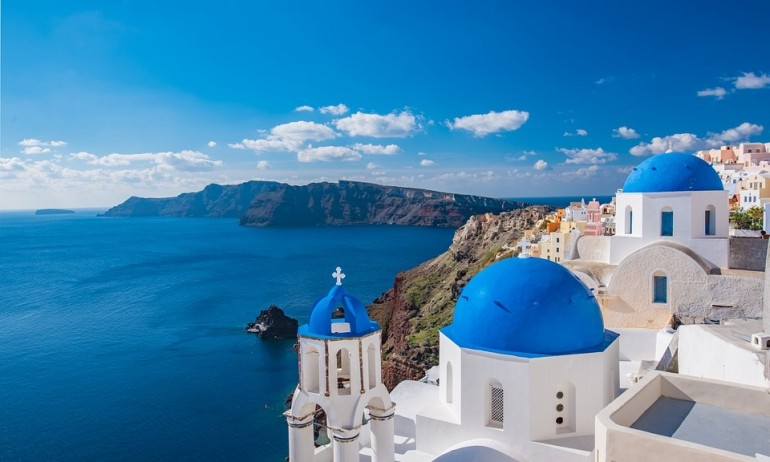
There is no doubt you have heard of the charming and mystical Santorini - one of the most romantic places in the Mediterranean. Proudly towering on the sea-sinking caldera, with its stunning landscapes, steep colourful rocks and magical sunsets, the island has become a landmark itself, attracting thousands of tourists from all over the world. But besides with the devastating eruption of the volcano at the end of the seventeenth century, many people also associate it with the lost Atlantean civilization ... Why is this so, and many other things about the island, you can find out in this article. Get ready for an extreme descent into the deepest and most interesting parts of the steep slopes of Santorini!
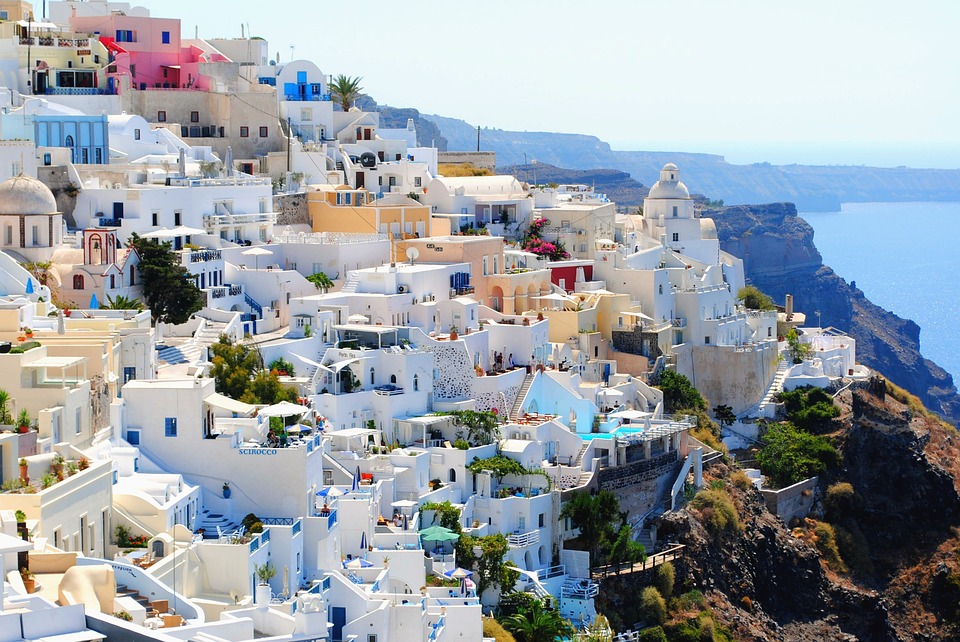 pixabay
pixabay
THE VOLCANIC ISLAND BETWEEN CRETE AND ATHENS
Officially called Thira, Santorini is the largest among the small group of volcanic islands in the Aegean sea. It is part of the archipelago of the same name, which includes Tira, Tirasia, Aspronissi, Nea Kameni and Palia Kameni, the last three of which are uninhabited. They are all part of the Cyclades group.
It is located at a relatively equal distance between Crete and Athens, making its position strategically important as now and in the past.
In fact, in the past, the island did not look exactly like it looks now... The current crescent shape of the archipelago is due precisely to the monstrous volcanic eruption that occurred at the end of the seventeenth or in the sixteenth century. Previously, the archipelago was almost a regular circle, which was also an outcome of past volcanic eruptions. As a result of the natural cataclysm, a dome was formed in the central part of the ancient island, which sank and formed the present-day sea-shaped caldera. This is how the whole island group appeared, as even nowadays the small uninhabited island of Nea Kameni has an active volcanic crater. But don't worry - his last major eruption was back in 1950 ... It is located in the caldera and is extremely attractive to tourists who really want to feel the authentic Santorini. While being here, everyone knows that they are on a volcano, but few people can actually feel it. At least until they see it with their own eyes - up close!
SANTORINES - EARSTWHILE ATLANTIS?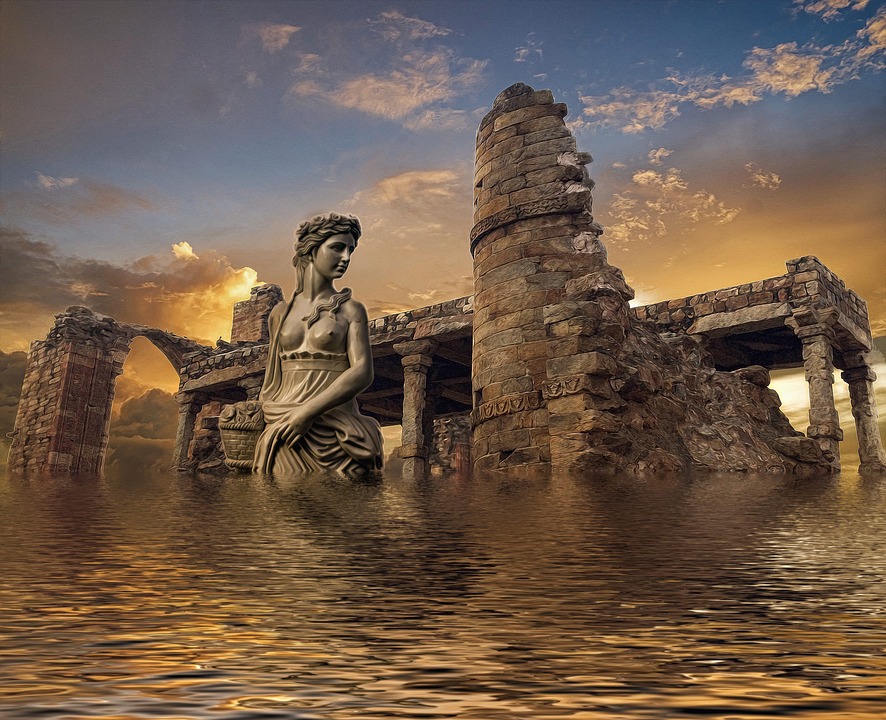 pixabay
pixabay
But the outbreak was so intense and devastating that traces of it were found even in Egypt and across the eastern Mediterranean coast. Many scientists relate this event with the disappearance of the Cretan-minoan civilization. The time of its disintegration and the time of the large-scale explosion are relatively close, although the exact date of the eruption has not yet been fully established. However, this event was so strongly imprinted in the mind of the ancient man that thousands of legends were created from it.
One is the well-known legend of the extinct Atlantis Island and the lost Atlantean civilization that was overdeveloped. Today, this plot has been repeatedly used in numerous children's animations, films, books, etc. But it was inspired by a far distant ancient story…
The legend has several versions, but in all of them it ends with a devastating destruction - the same as in Santorini. However, very few people know that this terrifying tale was first told in the dialogues of the ancient Greek philosopher Plato (427-347 or 348 BC). What we understand from him is that the island was destroyed in all likelihood by a natural disaster - an earthquake or as a result of the tsunami effect about 9000 years before the time when he himself lived, which is to say around the 15th century BC. But whether or not Plato's story was inspired by a real historical event, or was just an artistic fiction created for the purposes of his writings, we may never know. However, this will not stop the search for the lost Atlantean civilization. Many scientists and amateurs are still trying to find the link of the lost Atlantis to a real place and one of the suggestions is namely Santorini.
BEYOND THE LEGENDS
Apart from myths and legends, on Santorini did indeed live ancient civilizations. The history of the island is an extremely beautiful and ancient story about the survival of the man and his connection with the nature. It is directly related not only to the great volcano eruption of the 17th century BC, but also to many other destructive natural disasters. Each layer of the caldera tells us a separate event, every bit of Santorini reveals a new world, a new human destiny, a new aspect of the island's past.
From archaeological excavations we learn that the earliest human presence here dates from 3600 BC. Multiple studies near Akrotiri and the famous Red Beach prove the presence of a Minoan colony. The city was shaped in a very similar way to the cities of Crete, with a large number of potteries found, with the same ornaments of humans and animals typical of the Minoan style.
In antiquity, Santorini actually bore the name Strongili, which translates as circular. And this, of course, is no accident. As mentioned in the beginning, in the past the archipelago had a form of an almost perfect circle, which subsequently changed after the great outbreak that contributed to the disappearance of Minoan civilization.
Around 1300 BC, Phoenicians settled on the island. According to Herodotus, they remained there for eight generations and gave it the name Callista. Later came the Dorians, who in the 9th century BC founded the capital Tera or Thira. It rises 396 meters above sea level in Mount Mesa Vuono and bears the name of their leader, Terrace. Subsequently, the whole island began to be called Terra.
During the Middle Ages Terra, along with other Greek territories it became part of the Roman Empire, and after its collapse - of Byzantium. After the fall of Constantinople in 1204, the island was conquered by the Venetians. It was then that they began to call it Santorini, which derived from the Italian name of the church of Santa Irini.
In the 16th century, Santorini came under the rule of the Ottoman empire and remained within its boundaries until 1931. During this period, the island, having an extremely strategic position, succeeded in the Mediterranean trade. In the 18th century the viticulture flourished as well. This was the outset of a period of great prosperity, which would however end in the beginning of the 20th century, marked by the bloody world wars. After 1956, when a massive devastating earthquake struck the island, much of the population left. However, in 1970, things changed and tourism prospered. The unique landscapes and interesting history started to attract thousands of people from all over the world, and today Santorini is one of the most famous and visited tourist destinations in the world. Over the years it has well developed as a well-known venue for weddings and honeymooners. So if you see more than 10 grooms in one day while you're here - don't be surprised at all. Love is in the air in this magical place...
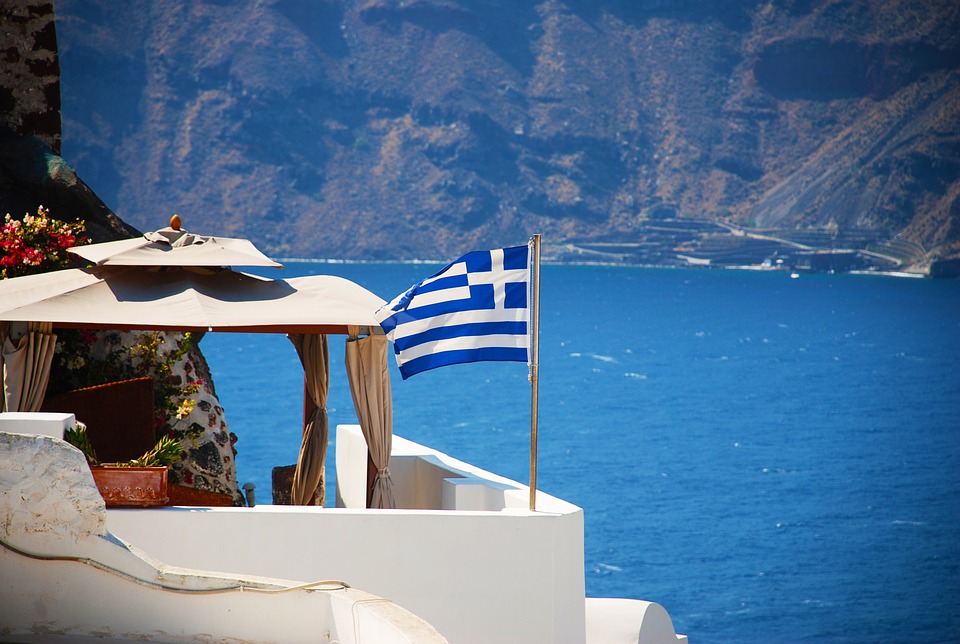 pixabay
pixabay
WHAT TO SEE IN SANTORINI?
From the rich and intense history of the island, and all the natural phenomena that have happened here over the millennia, it is clear that the decision of the tourist will definitely not be easy. Among the monuments of culture, the ruins of history, the enchanting landscapes and the marvelous sunsets that are revealed from the high rocky shores of Santorini, visitors here will feel as in an endless fairytale right in the center of the world…
FIRA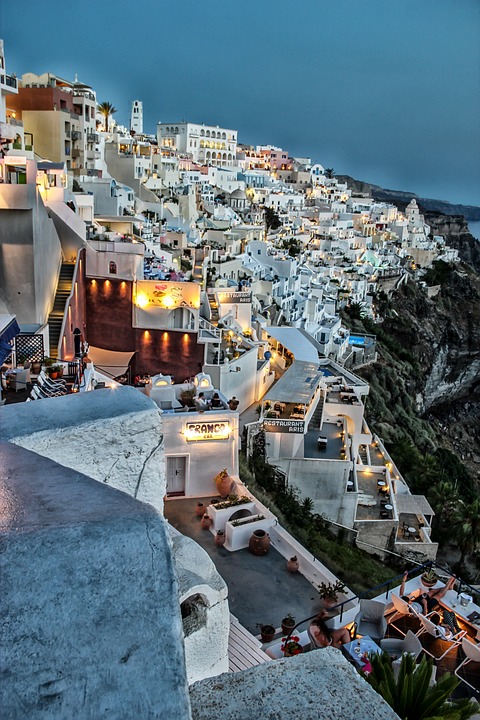 pixabay
pixabay
And why not begin your fairytale with a magical walk in the main village? Meet Fira and immerse yourself with the exciting atmosphere of the harmoniously interwoven Greek style and modern luxury. Enjoy the thousands of incredible views of the horizon and the sunset that will open for you from the caldera. There are many panoramic cafes on it, suitable for contemplation of the wonderful landscapes.
Feel the true romance of the city as you stroll along the small cobblestone streets. You will come across charming shops filled with handmade ceramics, wood, painted glass and all kinds of jewelry. You will also notice that the trademark of the city are the beautiful white cubic houses.
As soon as you arrive here you will not miss to see the Orthodox Cathedral in the city center. It is the largest temple on the island and its white domes will attract your attention as you climb the steep streets leading to the central area.
And what is there for dinner? A huge and terribly difficult choice within the thousands of tavernas located next to each other on the caldera. Give yourself a wonderful evening with delicious Greek cuisine, sirtaki, sea breeze and magical views!
THE ANCIENT TOWN OF THIRA
Immerse yourself in Santorini's past by visiting the Ancient City of Thira, located just 10 km from Fira. Situated on the high rocky hill of Mesa Vouno, it offers great views of the island's southeast coast.
The city, as mentioned earlier, was founded in the 9th century by the Dorians who came from Sparta. You will find many ruins of its former grandeur, including open-air sanctuaries, temples, public buildings, a theater, agora, shops, houses and a well-developed sewer network. The temple of the Egyptian deities is extremely interesting. The reason for the spreading of the cult of Isis, Anubis and Serapis in these lands was that at that time Santorini was used as a naval base by the Ptolemy dynasty in Egypt.
You can also visit the Museum of Prehistoric Thira, located in the town of Fira itself.
THE ANCIENT TOWN OF AKROTIRI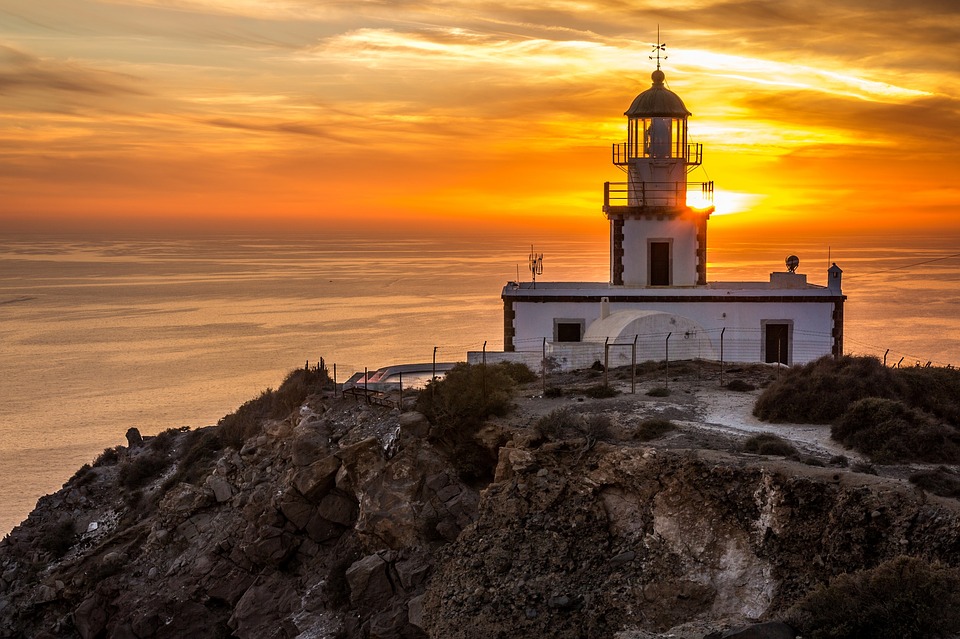 pixabay
pixabay
Located in the southeastern part of the island, it is certainly one of the most impressive Minoan settlements of the Bronze Age. Because of its preservation from volcanic ash, it is very reminiscent of Pompey. It dates from the 16th - 15th centuries BC, but around 1627 BC. the eruption of the volcano destroyed it and it was completely burned. However, this has led to the preservation of many murals, works of art and buildings. It would take you about an hour to explore the entire ancient city.
OIA: THE MOST BEAUTIFUL SUNSET pixabay
pixabay
It is said that this city reveals the most beautiful sunset not only in Santorini, but all over the world… The village is located on one of the highest points of the island just above Fira and is among the most famous resorts mainly because of the wonderful sunset. Crowds of tourists gather every night and take stand positions armed with their cameras. Everyone is eager for the beginning of the spectacular show, which is repeated every day and in which the sun plays the leading role. Most panoramic cafes and tavernas are then full, so if you plan to dine in Oia during the sunset, it is better to reserve your seats in advance. Captivating views and mouth-watering Greek dishes are guaranteed. And don't forget to take a picture!
DIVING IN THE CALDERA
Would you dive into a volcano crater? Sounds really exciting, doesn't it? If you are looking for an adventure, this is the right time! As you descend 14 meters deep, you will discover unforgettable views, some of which are the remnants of a ship just near the volcano. There is nothing to fear - diving is suitable not only for experienced swimmers, but as well for enthusiasts. Don't miss this opportunity - it's worth it!
THE FIRA TRAIL
Fira trail is one of the most suitable places for walking here. It is it that connects the capital city of Fira with the village of Oia. If you are into hiking, this is right place for you! The walk lasts about 3 hours and offers breathtaking views and incredible scenery that you will never forget.
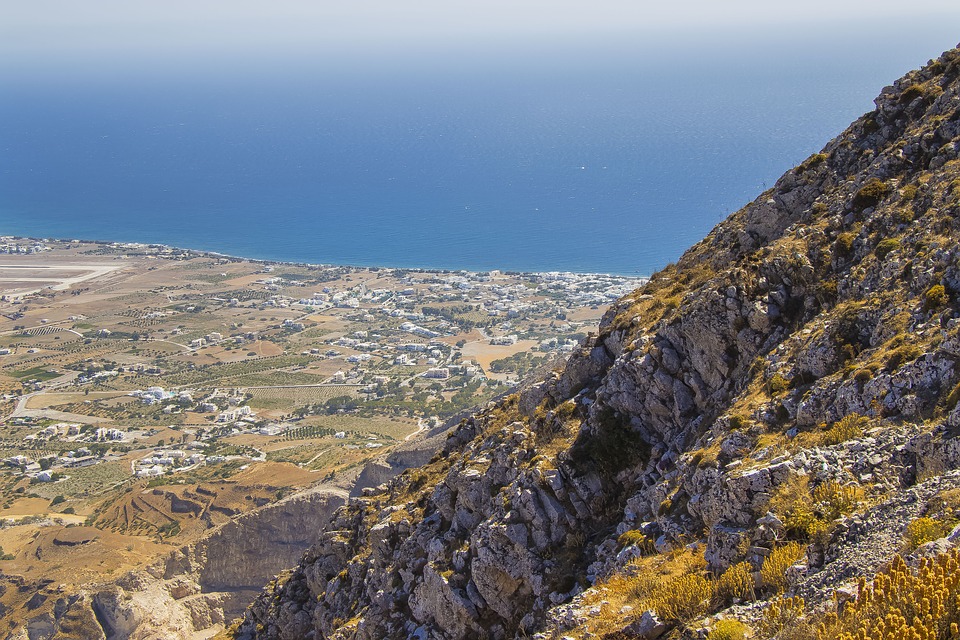 pixabay
pixabayBEACHES - WHITE, RED, BLACK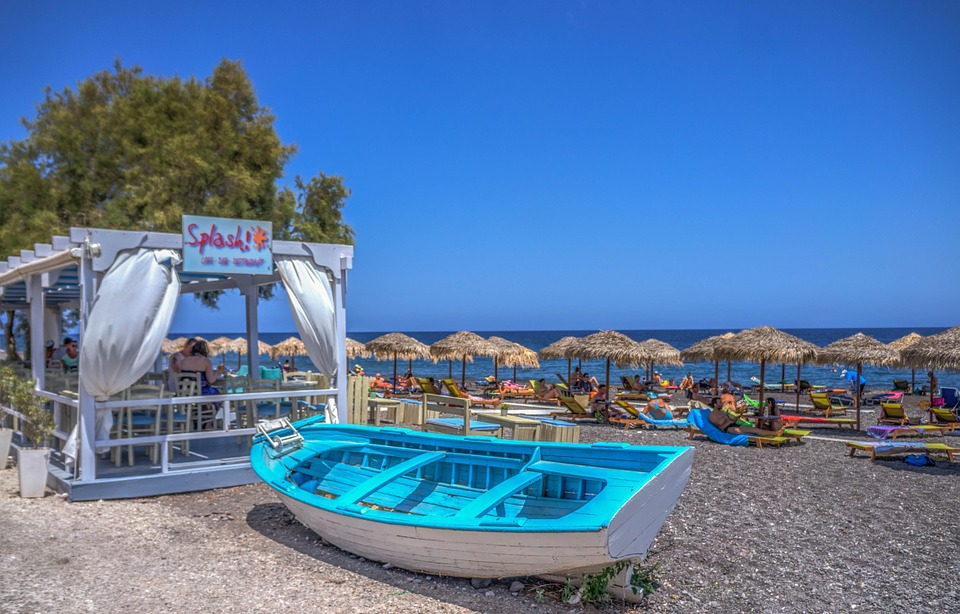 pixabay
pixabay
Santorini is also known for its interesting pallette of multi-colored beaches. Although they are not the typical beaches with fine splashes and many amenities, they will surely fascinate you with their difference. Due to the volcanic origin of the island, here you can find variegated sand - black, red, white, gray... The most famous beaches are Camari Red Beach, Perissa, Cape Columbo, Monolitos and White Beach. Sometimes a truly catastrophic disaster, such as a volcano eruption, can lead to the creation of wonderful natural phenomena…
Santorini is a real pleasure for tourists - a magic that is worth being experienced. Hardly is it a coincidence that it is the most famous and most visited island in Greece. Here you will not only combine culture and nature, but you will do it in a unique volcanic way!



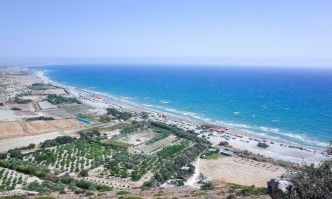
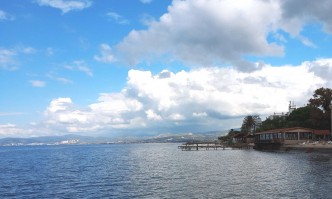
Comments (1)
18.11.2023 12:56 / Reply
Add comment